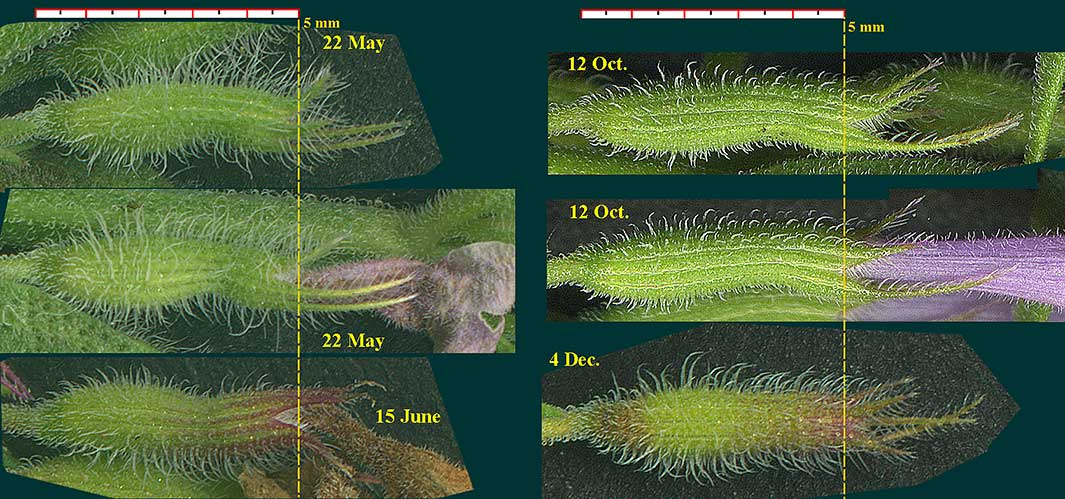

Trichomes of H. reverchonii var. sepyllifolia show significant seasonal differences in length. Spring and summer trichomes are typically greater than 1 mm; in fall (October) the longest hairs are generally less than 0.5 mm. In spite of the hair length differences the pattern of hair length typical for this taxon — i.e., longest hairs at the tube's mid point with gradually shorter hairs on both sides (red line in the image below) — does not change.

This observation is based on a 50 plant population sample which was closely monitored from January through October 2013, including stem collections of 50 plants in mid May and late October. All 50 plants were examined for calyx hair length and distribution. In May all plants exhited long haired calyces, although one [N27]had slightly shorter hairs on two calyces. October plants all had short-haired (± 0.5 mm) calyces, although one had mostly longer hairs [#37]; one [s46] also had a calyx with long hairs; three had hairs intermediate in length. (For a comparison of May and October calyces from 4 plants [IDs N5, N10, N41, N50].) The fall 2013 season was marked by abundant rain and temperatures were normal for the season.
H. drummondii does not exhibit this seasonal variation. Longest hairs of this taxon collected in May and December were ±0.5 mm, always concentrated on the lower third of the tube, becoming greatly reduced toward the teeth.

H. reverchonii var. reverchonii also exhibits significant differences in trichome length, but not as uniformly as H.r.s.. The June 15 hairs are intermediate and the plant was in a relatively dry area. The longer December 4 hairs may reflect renewed 'spring-like' growth after fall rains and warm days (also noted with some shoots on these plants).
